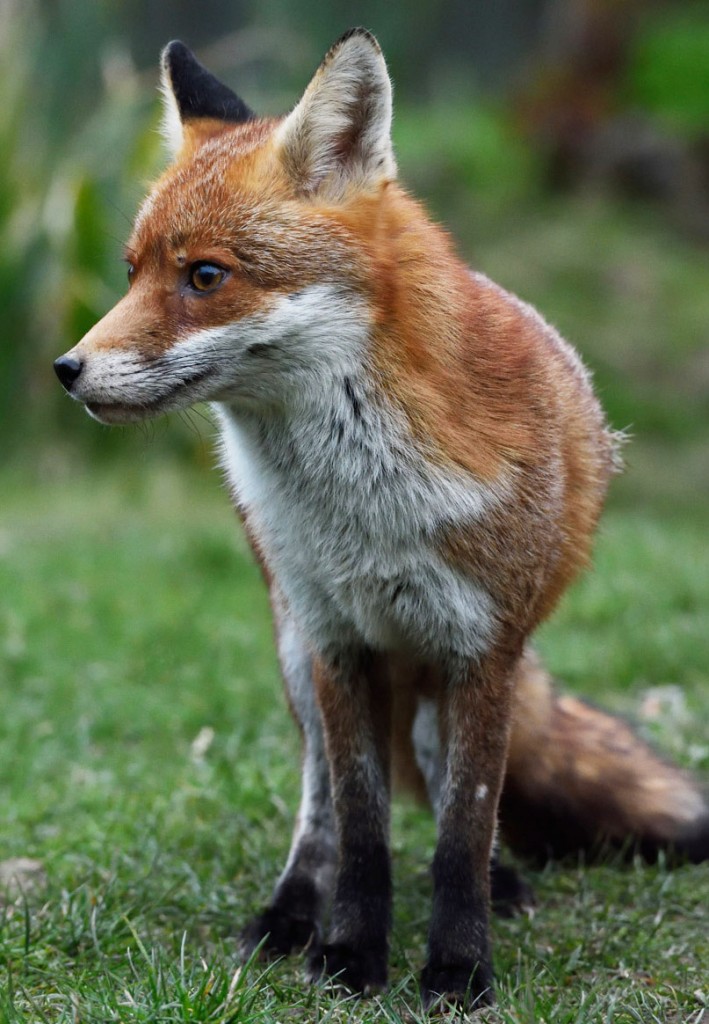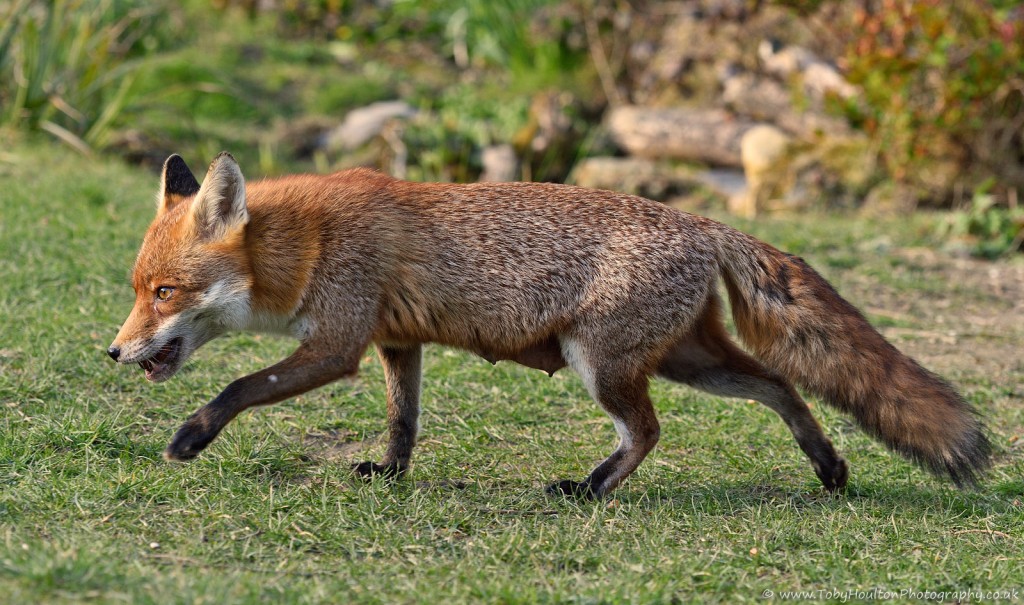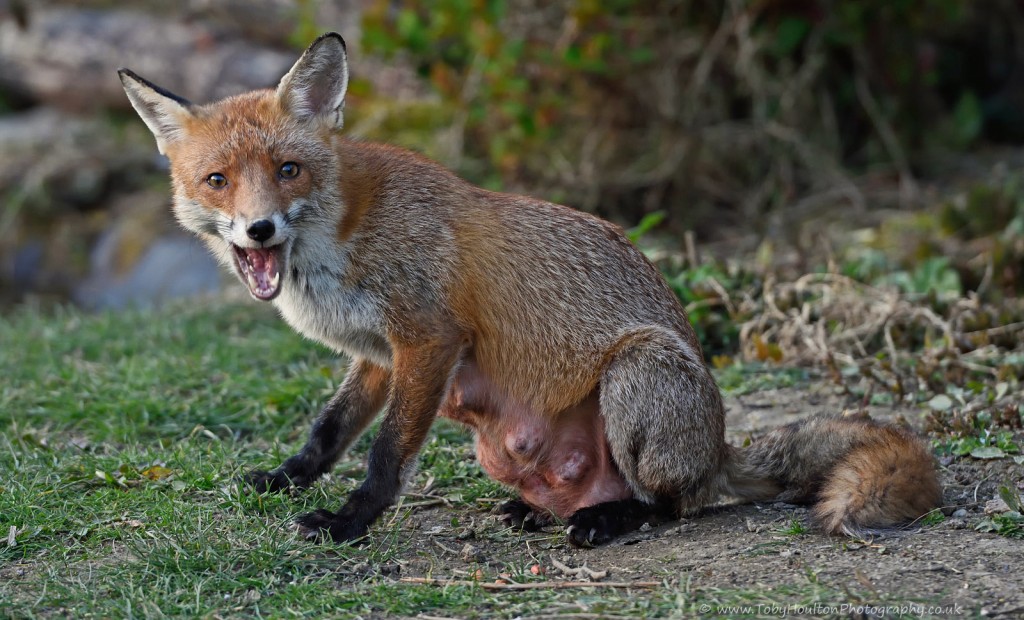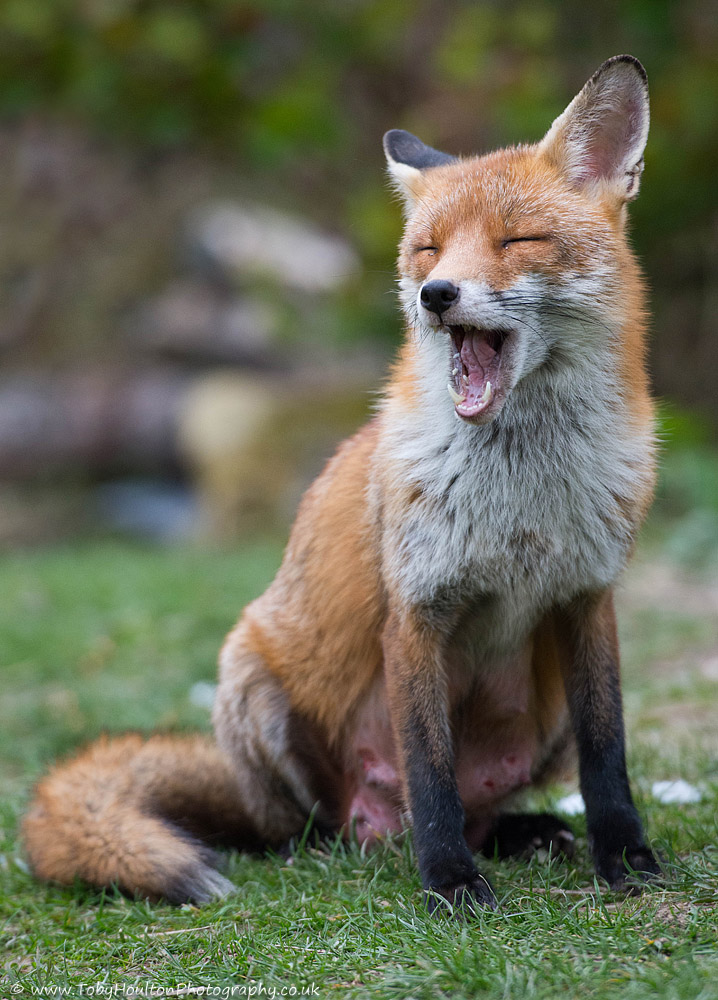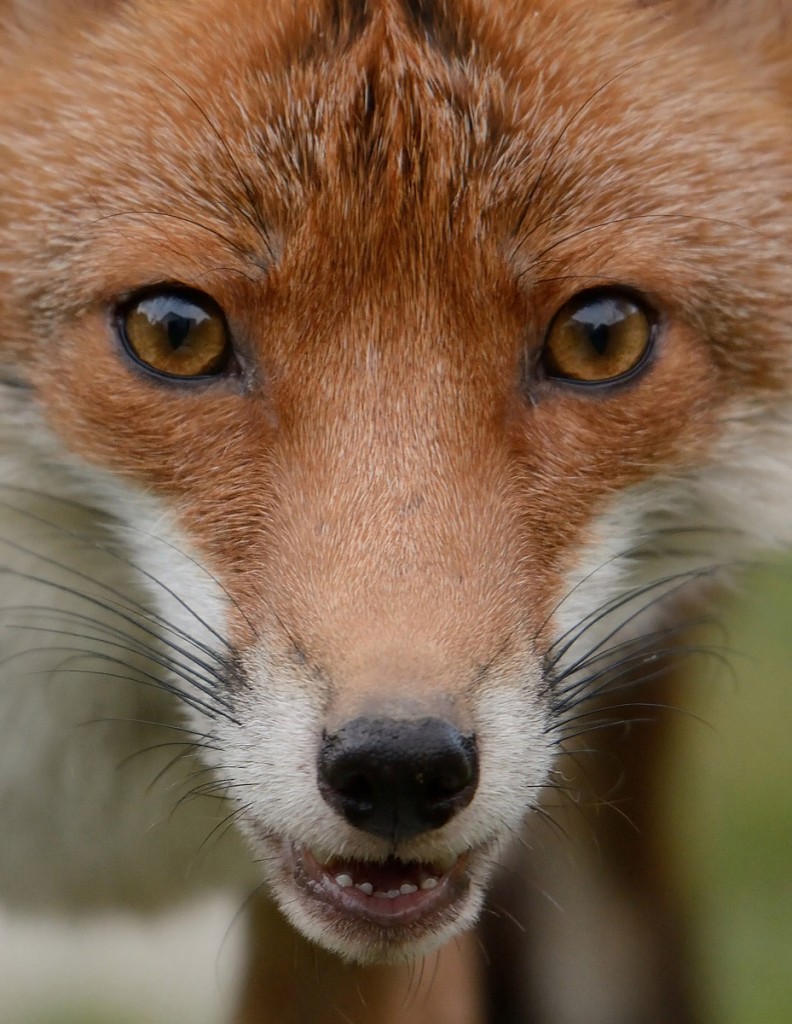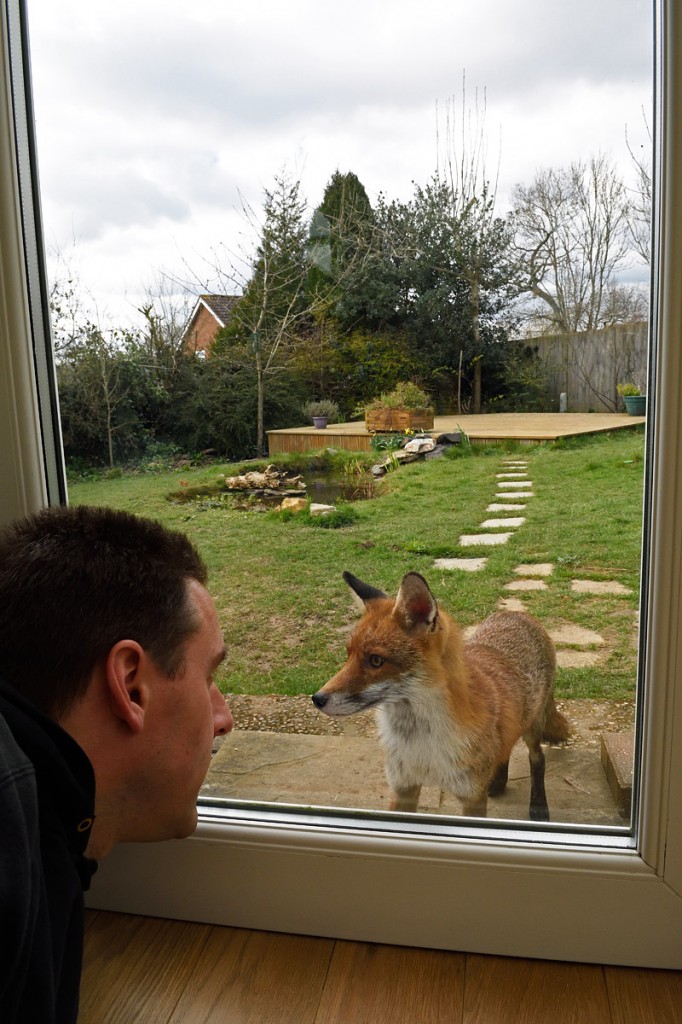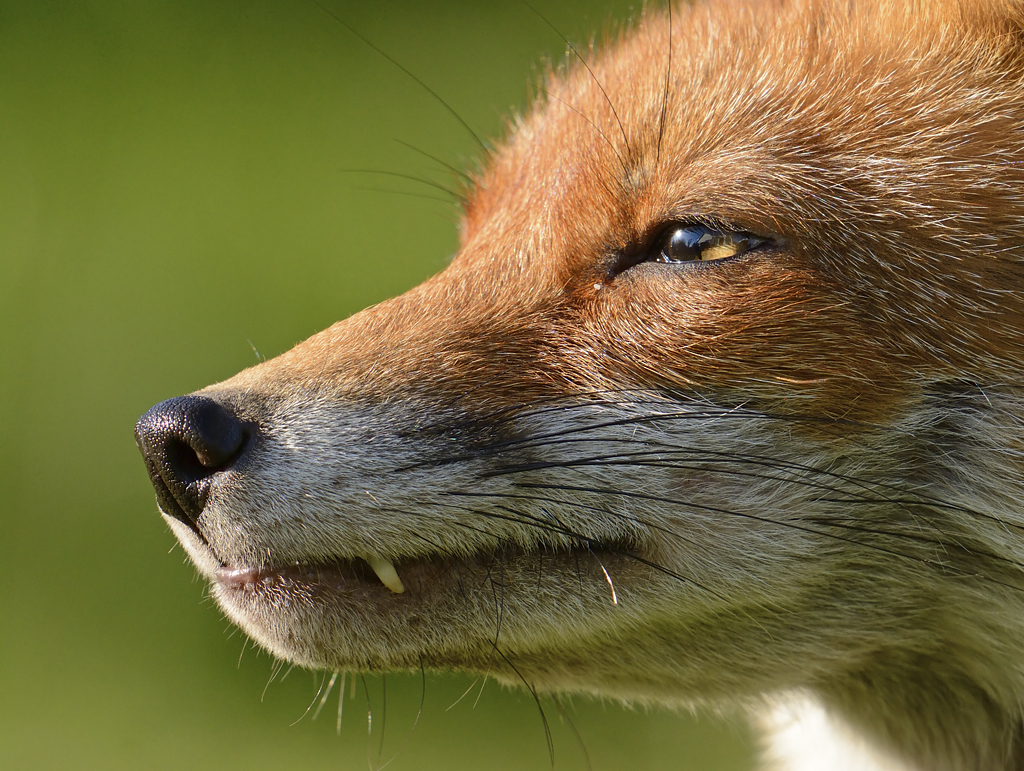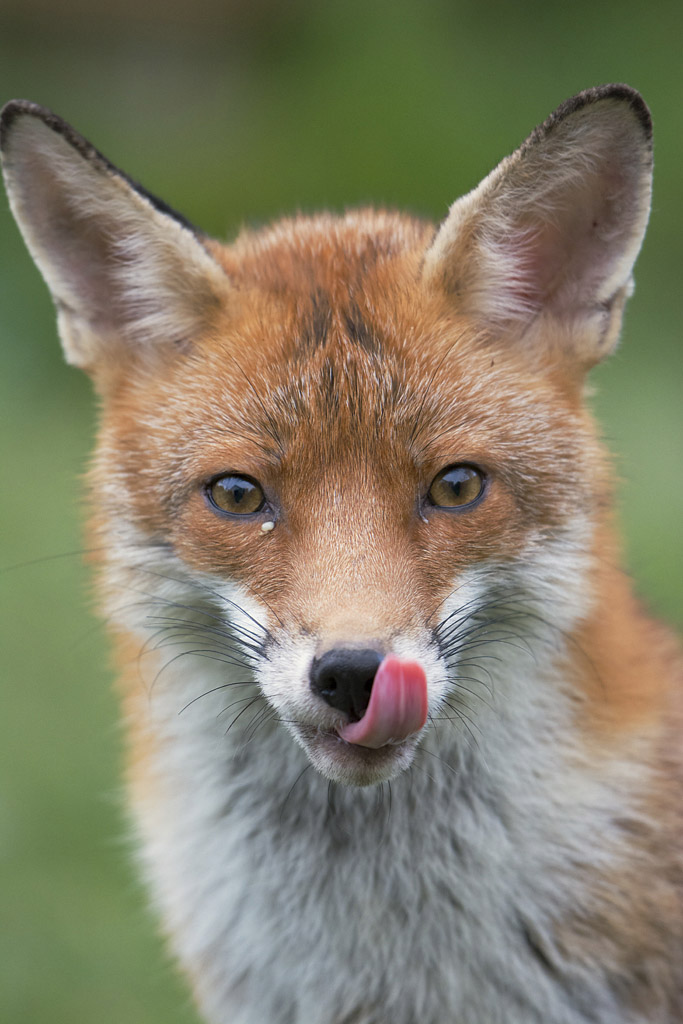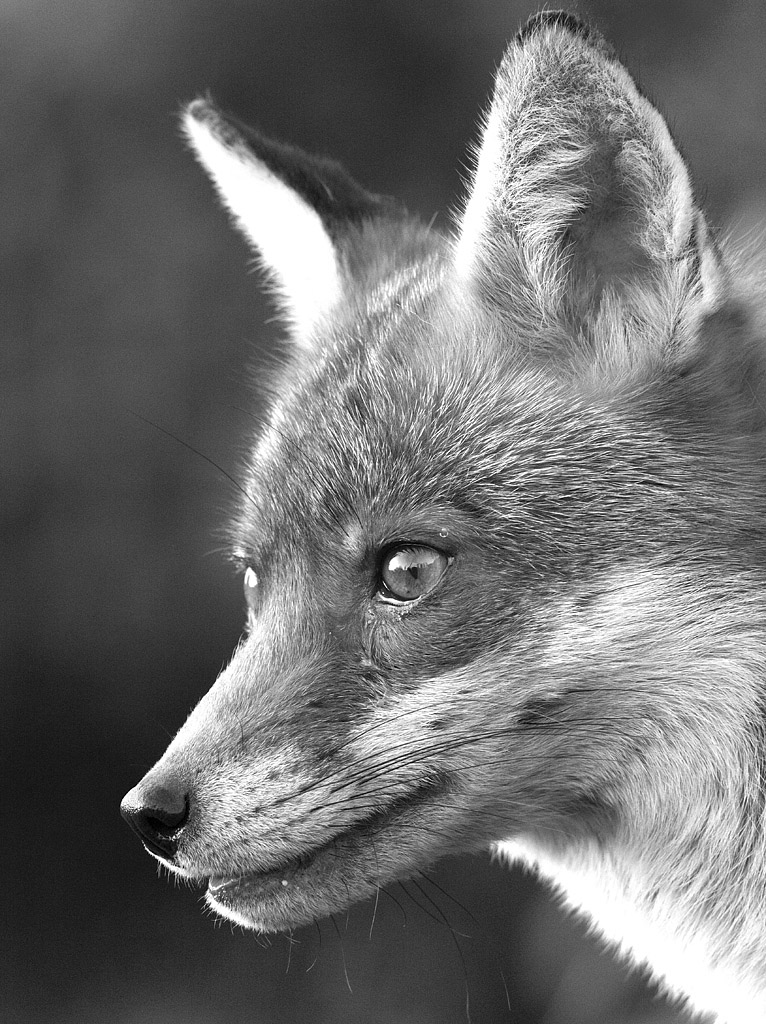I’ve been wanting to visit Bempton Cliffs for some time, the main draw being that it’s a mainland seabird breeding colony and therefore offers great opportunities from dawn to dusk without having to organise boat trips. This year my wife and I spent a week in East Yorkshire just down the road from Bempton, followed by a week at Minsmere (blogs to follow).
So what’s it like? Immediate impressions as you drive into the well organised parking areas are good and a new visitor centre adds to the facilites available. I’m not one for crowds though and one thing I will say is that bempton is VERY popular during “normal” hours. It’s great to see school parties learning about the birds too. The RSPB are doing a great job here and the staff were very welcoming and happy to help. For those who keep hours similar to me fear not – although the visitor centre is open during standard hours, gates at the sides are open when it’s not so that you may come and go as you wish and for me this means lots of (very) early starts at this time of the year.
The first thing that greets you once you pass through the centre to continue to the cliffs is a small area with feeders that was alive with Tree Sparrows. Down here in Sussex (as I understand is the case across the country), these birds are in serious decline and are rarely seen. We do see them at Dungeness but not in the way they are here. They are totally at ease with people as there is a constant stream passing them and are really photogenic. I got some strange looks ( I assume by non birders who don’t realise what they were) sat during the quieter times just snapping these lovely little birds. There were lots of young around and plenty to point a camera at….
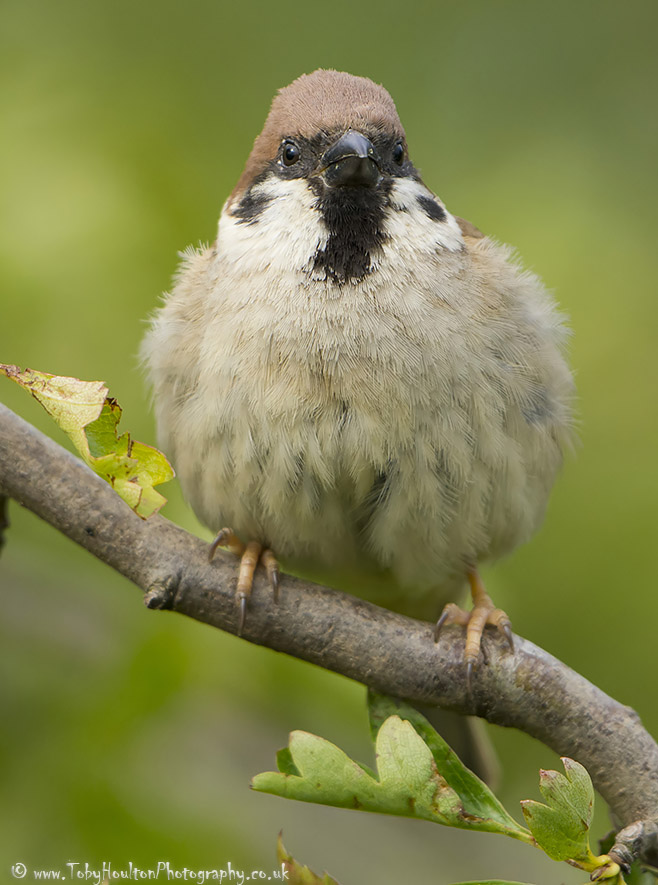
Tree Sparrow portrait
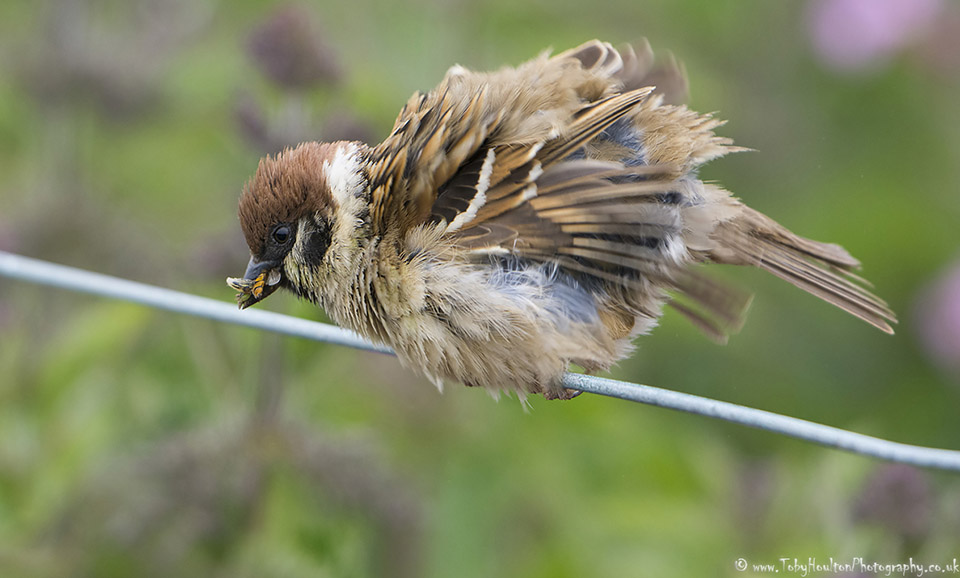
Tree Sparrow with beak full of food
The Sparrows were to be a constant feature of the week as they zipped about all over the site, hunting for insects and moths amongst the lovely swathes of Red Campion.
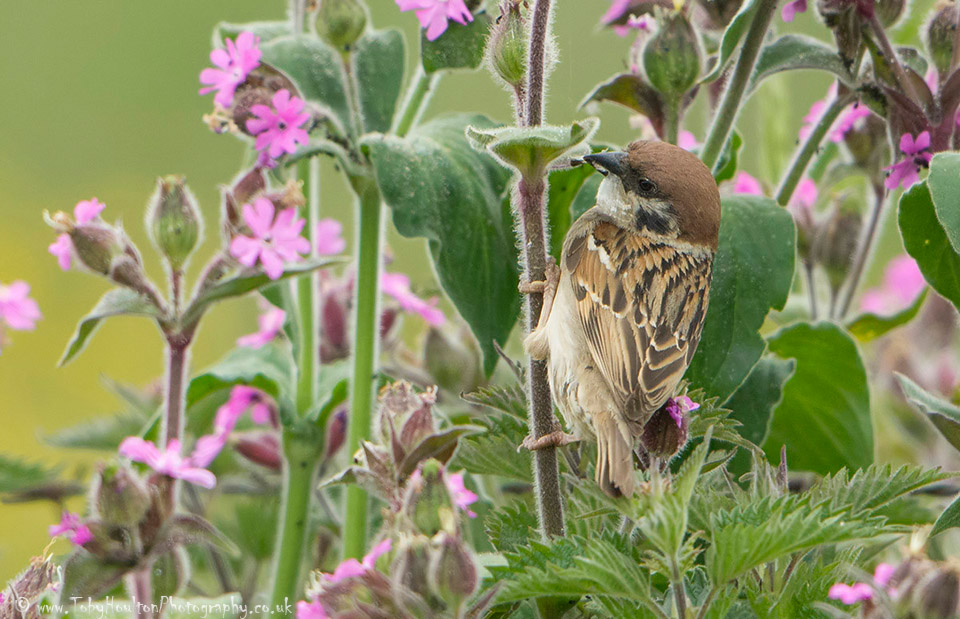
Tree Sparrow in Red Campion
It was quite easy to just get hung up taking images of these but, I had all week so would come back to these virtually every trip.
A short walk down easyily accessible paths through wildflower meadows leads you to the cliffs themselves. You can choose to go either north or south (but it’s easy to cover the entire site in a couple of hours) and there are excellent viewing platforms that give great views along the cliffs. The majority of the gannets were to the south and the Staple Newk platform affords great views down onto the nesting birds. All along the top of the cliff you will get close sightings and there are quite a few spots that the birds gather nesting material and rest too. Other birds of course are Guillemots, Razorbill, Fulmar, Kittiwake and Puffins, although the latter are harder to see – you will get views of them flying and sometimes close on the cliffs but it’s not like sitting on Skomer or the Farnes. The Gannets are the stars here in my opinion.
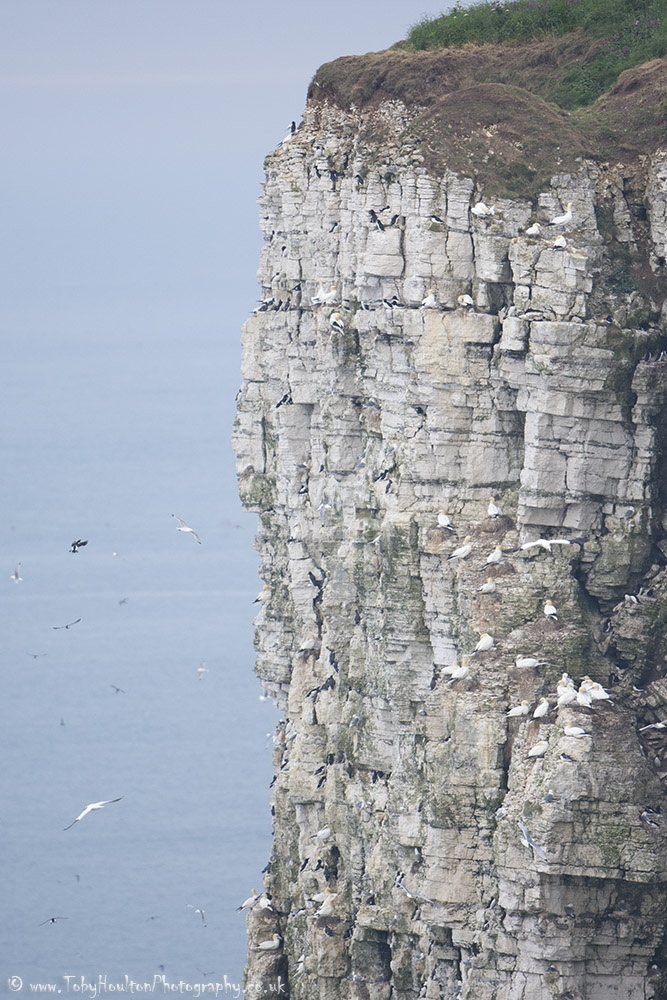
Bempton Cliffs seabird colony
The cliffs are quite a sight. 400ft in places and smothered in seabirds. The sights and sounds hit you, followed by the smell! You soon get used to it though and it’s well worth it. It’s hard to put into words just what’s it’s like and even a photograph doesn’t do them justice. All along, every nook and cranny is in use.
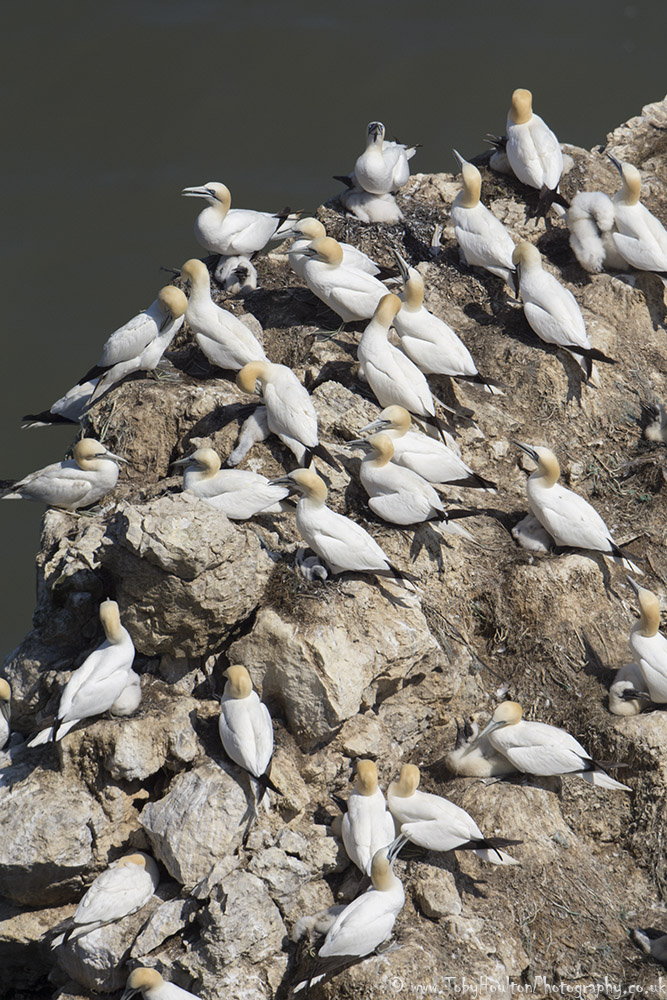
Gannets at Staple Newk platform, Bempton
Any photographers are going to be in their element, there is so much going on it’s almost confusing what to point the lens at. As is always the case with white or black and white birds, it can be difficult to get the exposure right so have a practice, check the histogram and make sure you are set to make the most of the opportunities. Personally I shoot everything on manual to keep control of this. I must have taken somewhere near 2000 images for the week. Sounds ridiculous but that’s what so good about the digital age – you can shoot away to your heart’s content to ensure you get the best possible shot. I have so many shots of gannets in fly-past mode but i’ll whittle them down and only keep the best. For example, birds flying past with weed for nesting I couldn’t help shooting at every time as often small details like the eye would be missing as it was hidden behind the weed. I wanted to make sure I caught it just right so took as many as I could. This might go against the “watch watch watch and only take shots of the best opportunities” but I didn’t want to get home to find I’d not get the shots I wanted. Also the weather wasn’t kind to us (You’d expect sun in June right??) for most of the time so I re-shot similar images in lower ISO when I could to get the best possible detail.
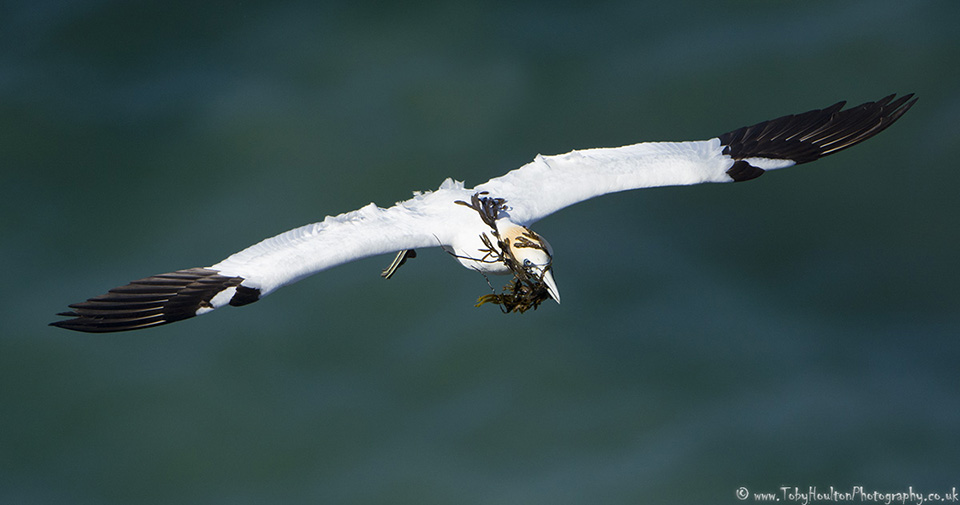
Gannet with seaweed for nesting
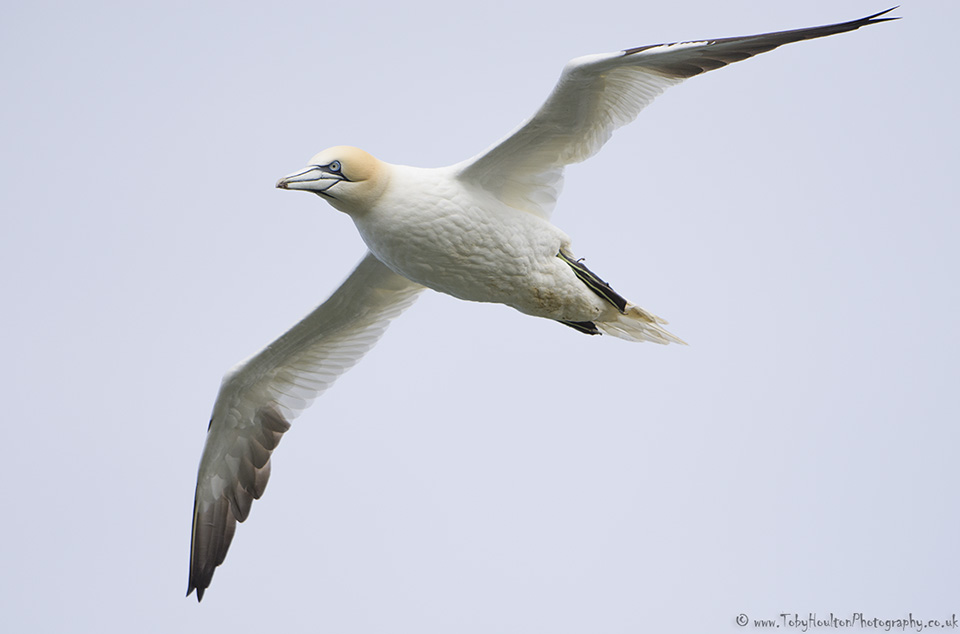
Gannet flypast – a very common view at bempton
I also wanted to try for interesting behaviourial shots (don’t we all!?). As I mentioned earlier, there are spots where the birds will gather nesting material that are within reach of a lens. I’m sure it’s just my imagination but the birds look so proud when they have something in their beaks. Perhaps it’s the body language but it just makes me smile!
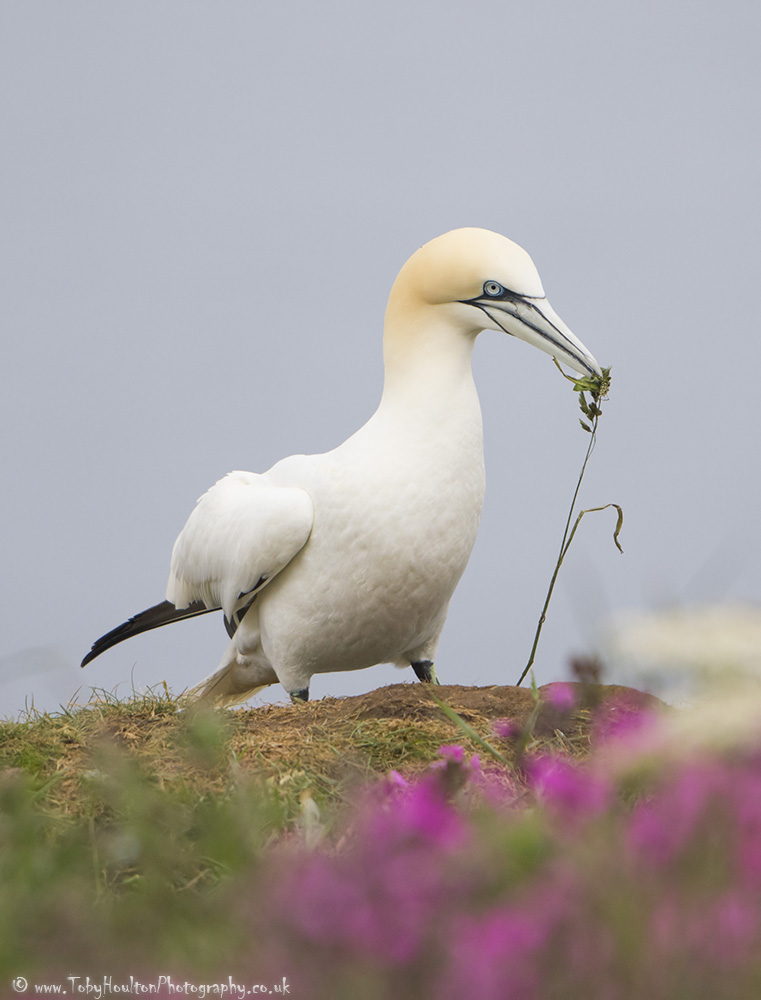
Gannet collecting nesting material at Bempton Cliffs
It’s clear that nesting material is at a premium so any feathers that are lost or shed (or plucked by peregrines!) is treated like treasure and is quickly grabbed. All the birds were doing this and it adds a lovely touch to a photo. I am still a fan of a well taken, sharp and properly exposed image that shows off the detail of the bird but if you can get just that little something extra the image transforms and tells a much bigger story.
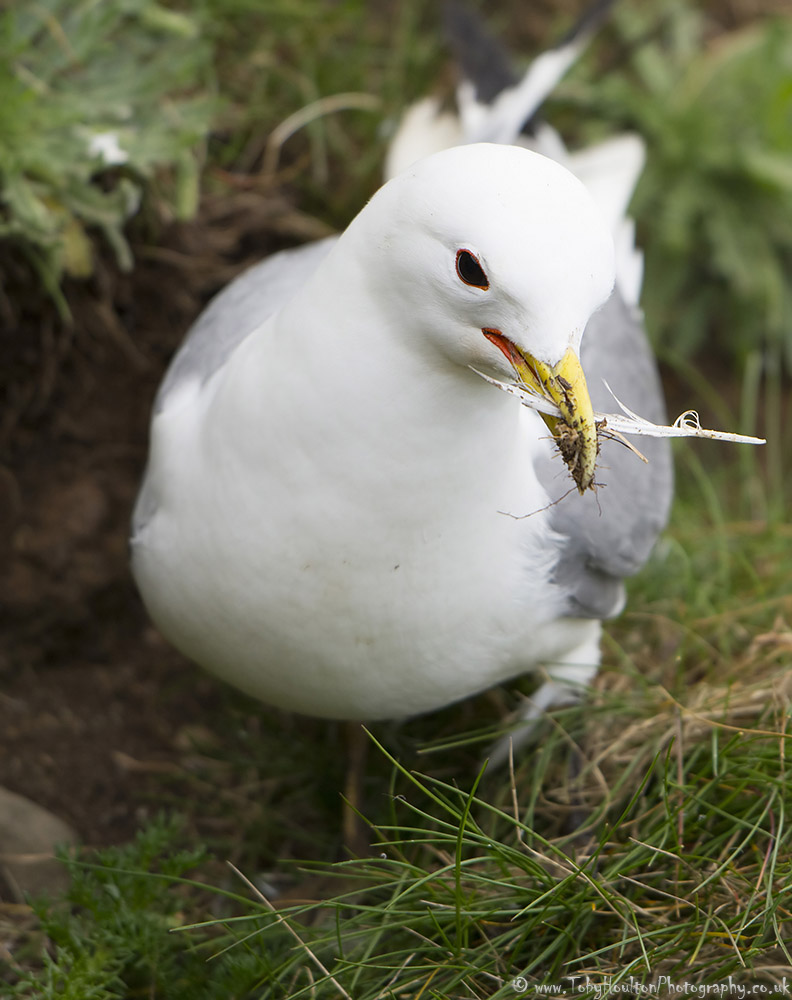
Kittiwake with feather for nesting at Bempton Cliffs
Finally for this blog entry I’ll leave you with a close up of a gannet. Some beautiful colours for a “big white seabird” (as I heard them called!)
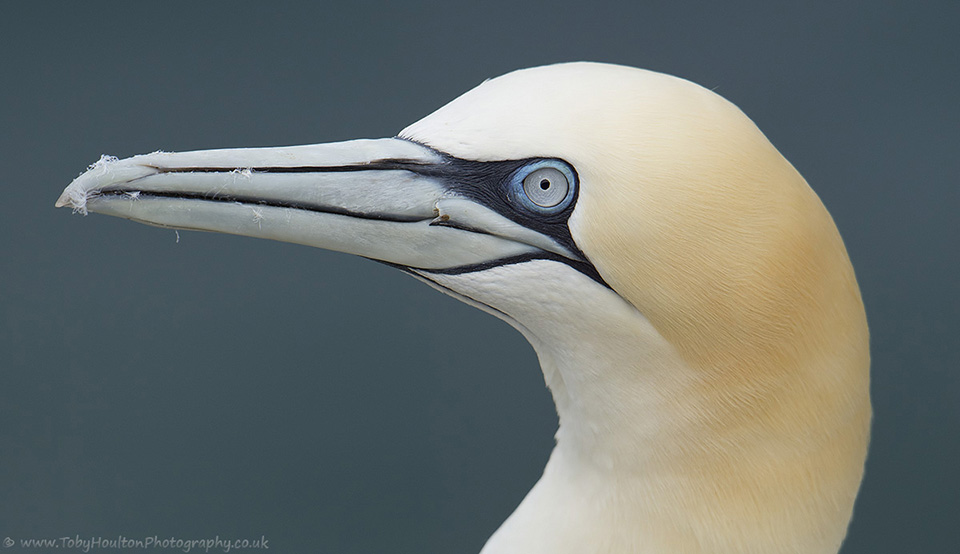
Gannet portrait – Bempton Cliffs
